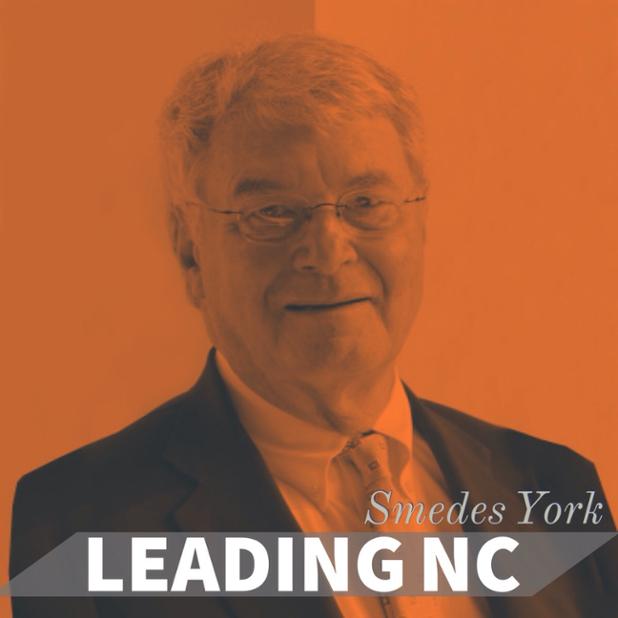
Leading North Carolina is a new series that will highlight a member of the Research Triangle Foundation’s Board of Directors. Every other week we will post a profile written by Bridgette Lacy that gives you an insider’s look at the people that help guide the decisions impacting future of The Research Triangle Park – and North Carolina. Each member of our board has a unique background that effects their perspective on how we should redevelop RTP in order to be better positioned for tomorrow’s workers. We are thankful for their time, their wisdom and their willingness to continue working with our team on this journey.
George “Smedes” York is a team player. The two-term mayor and third-generation property developer believes in the art of listening.
“You can build a consensus if you listen,” says Smedes, president of York Properties. “Sometimes people don’t listen. Some people have two modes of communication: talking and waiting to talk.”
“I’ve always worked under the approach if reasonable people get in the room with the same information and discuss it, you can build a consensus.”
Smedes’ family history runs parallel with Raleigh’s growth from small Southern state capital to desirable metropolis.
His grandfather, Charles Vance York, constructed many of the city’s landmarks including Memorial Auditorium and the Sir Walter Raleigh Hotel.
His father, James “Willie” York, developed Cameron Village, the first shopping center in the Southeast in 1949. As a member of the Raleigh Board of Education, Willie made the motion to desegregate the school system in 1960.
Smedes York became president of York Properties in 1977. That same year, he was elected to the City Council, and he began creating his own civic mark, working to bridge the differences between “pro-growth” and “no-growth” factions.
He has expanded the family’s commercial real estate business which now manages nearly 3 million square feet of retail space including shopping centers in Raleigh, Chapel Hill and Cary. The company also has a residential real estate arm and a commercial construction business.
Smedes reflects on his family’s contribution to the city in his memoir, “Growing Up With Raleigh.” He sat down with historian John Lawrence Sharpe for 200 hours of conversation over a five-year period.
Sharpe says Smedes learned one of the most valuable lessons of his life on the N.C. State University basketball court, where he played forward from 1959 to 1963.
“He regards the basketball court as a level playing field,” Mr. Sharpe explains. “You put five men versus five men. They have to play by the rules and the rules apply to everyone. That’s his metaphor for his way of dealing with the world in which he lives.”
“He is a consensus builder from the inside out,” Mr. Sharpe says. Whether playing ball on the court or serving as a mayor from 1979 to 1983, Smedes advocates cooperation.
It was during his college days that Smedes recalls first hearing about Research Triangle Park. When IBM moved to the RTP in 1965, he was in the Army. “The Park was thought of as very successful, lots of growth. I always felt it was a little misnamed since it was only buildings. Eventually, they added jogging trails.”
Smedes excited about the reinventing of the Park with the emphasis on the central part of the Park, the commons area.
“I’ve always thought of the Park as the downtown of the Triangle,” he says. “The main street of the Triangle is I-40. You’ve got the airport, Umstead Park, three universities, three cities, and its right in the middle. I’m interested in the headquarters serving as a meeting place for the Triangle. When you go to the Park it’s a neutral regional meeting place,” he says.
Smedes serves on the RTP board because he likes being a part of the Triangle’s continued vitality. “I don’t look at serving on the board as a charitable thing. I look at it as a business initiative.”
The success of RTP reflects on the whole region. Smedes wants to help write the next chapter. “You have to honor the past, but you have to work in the present and look to the future.”